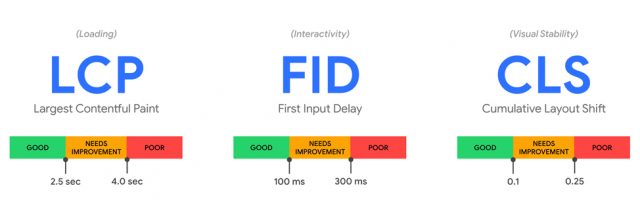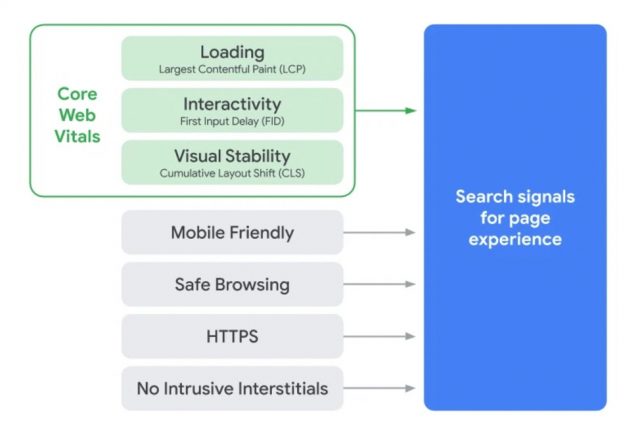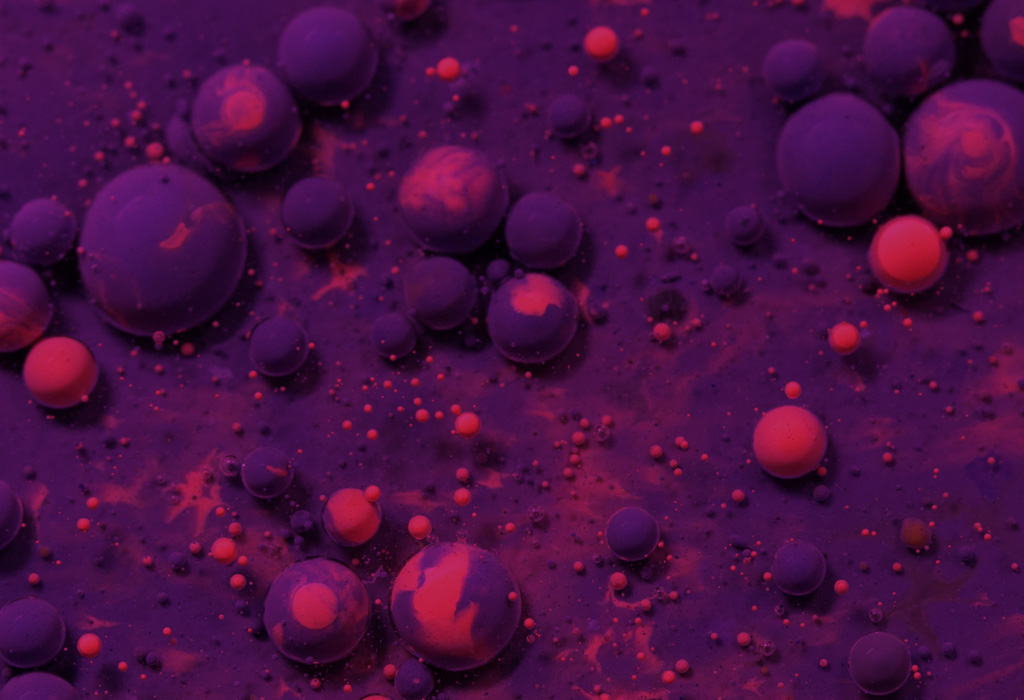In May of 2020, Google announced the latest in its algorithmic updates, focusing on what it has dubbed Core Web Vitals. Set to go live in May of 2021, this algorithm update will include a consideration called Page Experience, which will be an important factor in its search rankings.

- Largest Contentful Paint (LCP): this metric measures the loading performance of your website. To provide a good experience for your users, your LCP should take place within 2.5 seconds of the page first loading. In layman terms, it refers to ‘perceived loading speed’. Or how long it feels to your users like it takes to load up the content of the page.
- First Input Delay (FID): is a measurement of the interactivity of your site. To ensure a good experience for your users, pages should have a FID of less than 100 milliseconds. Specifically, this refers to how long it takes for your server to begin processing an action after a user has initiated it. For example, clicking a button.
- Cumulative Layout Shift (CLS): measures visual stability. In other words, how visually stable the content of your site is. This is improved by ensuring nothing is jumping or moving around unexpectedly. To provide a good user experience, pages should maintain a CLS of less than 0.1.
These new metrics will form an integral part of the Google search algorithm. They will live alongside existing metrics such as HTTPS, safe browsing, mobile friendliness and avoidance of annoying interstitials.

Whilst all of these items are crucial to search engine optimisation and certainly something you should be aware of and optimising towards, in this article we will focus on one, as it pertains directly to the impact of advertising on your site: Largest Contentful Paint (LCP).
WHAT IS LARGEST CONTENTFUL PAINT AND HOW DOES IT APPLY TO ADVERTISING
LCP is Google’s latest metric for measuring how long it takes for the primary content on a page to be loaded and ready to interact with. This metric only applies to content above the fold. Google has focused on this metric as it is one of the most accurate methods for analysing how fast a site is ready to be used.
Specifically, as it pertains to advertising, elements on the page served from another domain, like from an ad server, are typically not factored into the Largest Contentful Paint calculation.
The good news is that this means, at this point at least, resources that are loaded from another domain (like advertising from an ad server) are not factored int the LCP calculation.
WHY IS IT IMPORTANT TO PAY ATTENTION TO THIS ALGORITHMIC UPDATE
Google has made it clear how much weight they intend to place on these new algorithm updates. History is littered with the remains of publishers whose businesses were wiped out almost overnight by Google search algorithm updates.
WHAT HAS TRADE HOUSE MEDIA DONE TO ENSURE POTENTIAL IMPACT TO OUR PUBLISHERS IS MITIGATED
There are a number of important steps we have taken, both from an operational and a technical infrastructure perspective.
1. REDUCING THE NUMBER OF BIDDERS
On an ongoing basis, our team of technical account managers review bidder performance down to a placement level, ensuring only those bringing material value are bidding on our publisher inventory.
2. OPTIMISING THE COOKIE SYNC
Trade House Media offer an Intelligent Refresh solution to publishers, allowing advertisers to refresh the creative if the impression is viewable and has not been engaged with by the user. The downfall of reloading placements using a Prebid framework means that bidders can often accrue a ton of resource-draining code which they often don’t clear away when it’s not in use.
We have developed an innovative approach within our platform to prevent this from happening, significantly reducing the memory usage by memory hogging advertisers.
In one example, we were able to reduce the browser memory usage from over 700MB prior to us managing the account to less than 100MB once we had begun managing the advertising exclusively.
3. INTEGRATING WITH COOKIELESS TRACKING PARTNERS
There has been a lot of news about the future of advertising in a cookieless world. We have been at the forefront of futureproofing the advertising businesses of our partner publishers. These unified ID solutions rely on methods for targeting and measuring advertising that are far more efficient than the historical approach to cookie syncing that has driven the advertising market for the last several years.
